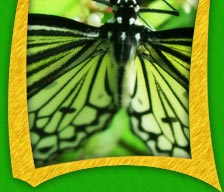


 |
||
BUTTERFLIES VS.
MOTHS Most adult butterflies are active during the day and brightly colored. Their bodies are generally slender and not especially pubescent (hairy). In contrast, adult moths are generally nocturnal or are active during twilight or before sunrise. Although some, such as the Io moth are brightly colored or have colorful "eyespots," most moths are drab, with cryptic wing patterns. Bodies tend to be bulky and are often quite pubescent.
FLORIDA'S BUTTERFLIES The Miami Blue is found in the Florida Keys and the West Indies. They also inhabit tropical hardwood hammocks like the Schaus Swallowtail. Their upperside is mostly blue and the females have an orange spot at the lower edge of its hindwing. Both sexes have 2 eyespots and a wide white band. Their food source is primarily flower nectar. For more information on Florida’s butterflies download and print ID cards for your next hiking trip. You can also learn more by going to our links section.
Resources for this article provided by Wikipedia & butterfliesandmoths.org (Opler, Paul A., Harry Pavulaan, Ray E. Stanford, Michael Pogue, coordinators. 2006. Butterflies and Moths of North America. Bozeman, MT: Mountain Prairie Information Node.)
|







